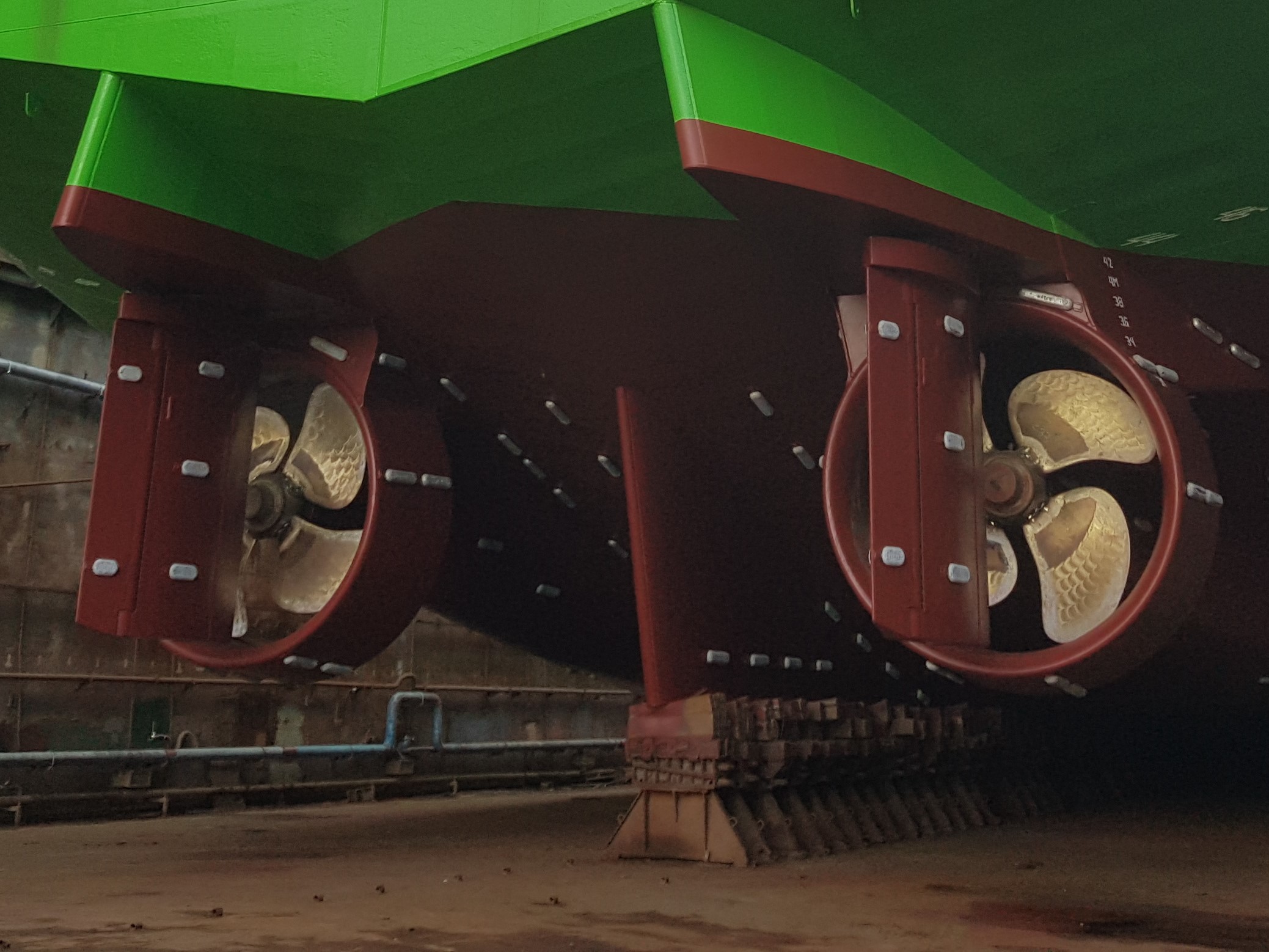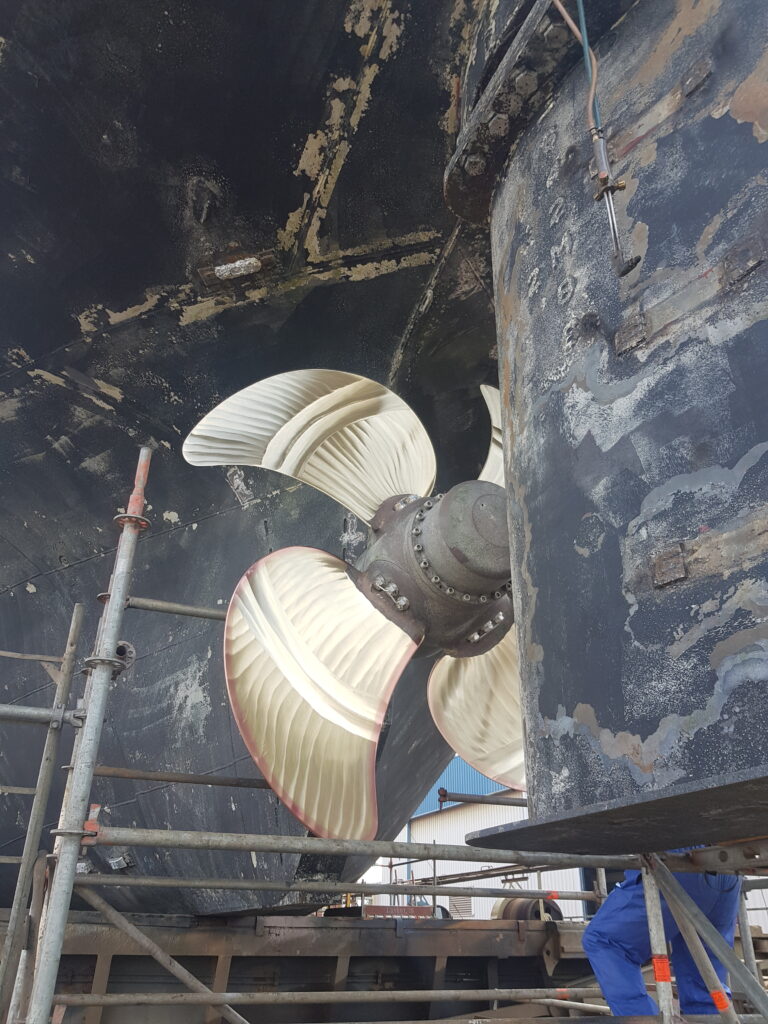Fouling on vessels creates resistance that decreases the sailing speed and is therefore disadvantageous to the efficiency of the ship’s propulsion. If this loss of cruising speed is compensated by using more engine power, then of course fuel consumption will increase. The extent of this effect was not known until recently. Various studies have been carried out in the past to determine the relationship between biofouling on the ship’s hull and fuel consumption. However, until recently, the (adverse) influence that fouling has on a propeller has never been thoroughly investigated. In 2018, a study at the University of Strathclyde in Glasgow provided insight into the extent of this effect.
The characteristics and working principle of a propeller
The design of many marine propulsion systems is customer specific. The propeller is often an important part of this and is custom-made and calibrated to the millimeter for each ship. All specifications are tailored to the activities and characteristics of the vessel. There are many factors that are taken into account: the complex hydrodynamic streamlining of the hull, the desired sailing speed, the work that the ship performs and the waters in which the vessel moves. These variables all affect the propeller design. The height and width, the thickness, the inclination of the blades: everything is designed in such a way that the least possible fuel is used and the most efficient speed is maintained.
The impact of fouling on propeller performance
The aforementioned academic research has yielded groundbreaking results. It has been shown that in the most extreme cases fouling can result in a loss in efficiency of more than 30% compared to the performance of a smooth, fouling-free state of the propeller. Even a small amount of fouling is already noticeable in the fuel consumption. Biofouling therefore has a direct impact on operational costs.
Removing fouling from the propeller
In many cases, fouling is removed with a high-pressure cleaner when the ship is in dry dock. If the ship cannot wait for the next dry dock, propellers are also regularly polished underwater. Propeller biofouling is an unavoidable problem for some vessels in sensitive conditions after only just three months. Underwater polishing offers a temporary solution to this, as three months after such cleaning, the diver can often return to do his job again. This maintenance costs money and has disadvantages for the propeller’s performance. These cleanings are in some cases noticeable in fuel consumption because the propeller is deformed a few millimeters.
The environmentally friendly solution
By preventing fouling on the propeller and thus making regular cleaning unnecessary, it can be ensured that fuel consumption does not increase. A solution for this is the Ultrasonic Anti-Fouling System.
The Ultrasonic Anti-Fouling system creates an ultrasonic sound wave on the surface of a construction. This leads to bubbles forming at a microscopic level, which then implode with force and thus combat the first phase of fouling: the adhesion of single-celled organisms that together form the layer of biofilm. By preventing this layer of biofilm, multicellular organisms, such as larvae of mussels or cockles, have no chance to attach themselves to the surface. This makes the Ultrasonic Anti-Fouling system a preventive and sustainable solution.
More information about the Ultrasonic Anti-Fouling system to reduce your fuel consumption? Please contact us: info@LSCare.nl
Click here for the study of the University of Strathclyde.





